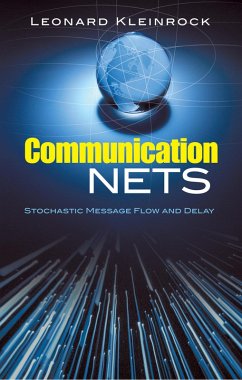Considerable research has been devoted to the formulation and solution of problems involving flow within connected networks. Independent of these surveys, an extensive body of knowledge has accumulated on the subject of queues, particularly in regard to stochastic flow through single-node servicing facilities. This text combines studies of connected networks with those of stochastic flow, providing a basis for understanding the general behavior and operation of communication networks in realistic situations.
Author Leonard Kleinrock of the Computer Science Department at UCLA created the basic principle of packet switching, the technology underpinning the Internet. In this text, he develops a queuing theory model of communications nets. Its networks are channel-capacity limited; consequently, the measure of performance is taken to be the average delay encountered by a message in passing through the net. Topics include questions pertaining to optimal channel capacity assignment, effect of priority and other queue disciplines, choice of routine procedure, fixed-cost restraint, and design of topological structures. Many separate facets are brought into focus in the concluding discussion of the simulation of communication nets, and six appendices offer valuable supplementary information.
Author Leonard Kleinrock of the Computer Science Department at UCLA created the basic principle of packet switching, the technology underpinning the Internet. In this text, he develops a queuing theory model of communications nets. Its networks are channel-capacity limited; consequently, the measure of performance is taken to be the average delay encountered by a message in passing through the net. Topics include questions pertaining to optimal channel capacity assignment, effect of priority and other queue disciplines, choice of routine procedure, fixed-cost restraint, and design of topological structures. Many separate facets are brought into focus in the concluding discussion of the simulation of communication nets, and six appendices offer valuable supplementary information.
Dieser Download kann aus rechtlichen Gründen nur mit Rechnungsadresse in A, D ausgeliefert werden.

